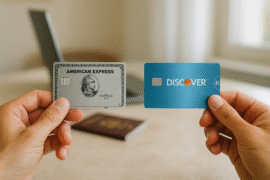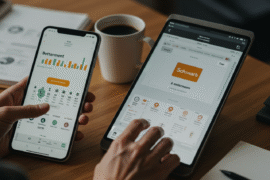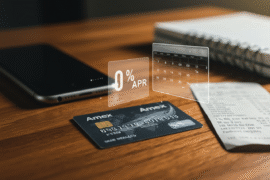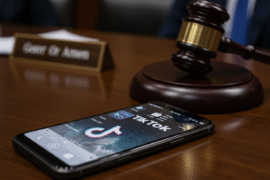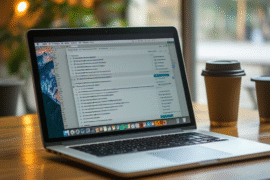This article may contain references to products or services from one or more of our advertisers or partners. We may receive compensation when you click on links to those products or services. Nonetheless, our opinions are our own.
- Key Highlights
- Introduction
- Understanding Identity Theft and Fraud
- The Basic Concepts and How They Operate
- Common Types and Methods of Identity Theft
- Recognizing the Signs of Identity Theft
- Warning Signals and Immediate Steps to Take
- The Role of Credit Reports in Early Detection
- Beginner’s Guide to Safeguarding Your Identity
- Essential Tools and Resources You Need
- Conclusion
- Frequently Asked Questions
- Recommended Reads
Key Highlights
- Identity theft is when someone takes your personal or financial information without permission.
- It’s important to watch for signs, like strange bills or unusual activity in your accounts, to spot issues early.
- Keeping your Social Security number safe, sharing less personal information online, and securing your documents are great ways to prevent identity theft.
- Regularly checking your financial statements and credit reports can help you detect and address fraud quickly.
- If you think you are a victim of identity theft, report it immediately to the Federal Trade Commission (FTC), local law enforcement, and your banks or credit card companies.
Introduction
In today’s world, everyone is online. This connection has caused a serious issue: identity theft. Scammers are constantly finding new ways to steal personal information. That’s why people need to protect themselves. This blog will simply explain identity theft, help you understand it better, and offer helpful tips to reduce your risk.
Understanding Identity Theft and Fraud
Identity theft is a crime that occurs when someone uses another person’s personal information for illegal purposes. This can include opening new credit card accounts, taking out loans, or filing taxes in the victim’s name.
Identity theft is a serious issue that affects many aspects of a person’s life. Victims can lose money, suffer credit score damage, and face a lengthy process to regain their identity. The first step to protecting yourself is to learn more about identity theft and how it works.
The Basic Concepts and How They Operate
Identity theft happens when someone uses your personal information without your permission. This can include your name, address, date of birth, Social Security number, and financial information. Criminals may use this data to impersonate you and steal your money.
Criminals use various methods to steal your information:
- They may send fake emails to trick you.
- They can use malicious software to access your devices.
- Some might steal your mail from your mailbox.
- Others could go through your trash to find personal documents.
Once they have your information, they might open new accounts or make unauthorized purchases. This can lead to serious consequences, such as damaged credit and financial loss.
Common Types and Methods of Identity Theft
Credit card fraud is a common form of identity theft, where criminals use stolen card details to make purchases without your permission. This can happen if someone physically steals your card or if they acquire your card information online.
Another concern is account takeover fraud. This occurs when criminals access your online accounts—whether for banking, shopping, or social media—and make unauthorized transactions or purchases.
Here are some common ways criminals obtain sensitive information:
- Phishing: Fake emails or websites try to fool you into sharing personal information.
- Skimming: Devices placed on ATMs or card readers capture your card data.
- Data breaches: Security issues with large companies can expose your personal information.
Recognizing the Signs of Identity Theft
Being vigilant can help you spot identity theft early. Watch for:
- Unfamiliar charges on your bank or credit card statements.
- Phone calls from collectors about debts you don’t owe.
- Bills for accounts you didn’t open.
Additionally, monitor your accounts closely. If you can’t log in, receive alerts about password changes you didn’t make, or notice suspicious transactions, take action right away.
Warning Signals and Immediate Steps to Take
If you suspect you’re a victim of identity theft, act quickly:
- Call your bank or credit card companies to report suspicious transactions.
- Place a fraud alert on your credit report with one of the three major credit bureaus: Experian, Equifax, or TransUnion. When you contact one bureau, they will notify the others.
- Consider filing a report with your local police. This can be helpful when disputing charges that aren’t yours.
The sooner you report identity theft, the better your chances of limiting the damage and recovering your money. If you’re unsure about your next steps, contact consumer protection groups or a lawyer for assistance.
The Role of Credit Reports in Early Detection
Checking your credit report regularly is one of the best ways to spot identity theft early. A credit report shows your credit history, including active accounts, payment habits, and credit inquiries.
Carefully review your credit report. Look for accounts you don’t recognize, inquiries from companies you didn’t contact, or errors in your personal information, like a strange address. These could indicate identity theft.
To get your credit report, visit the following resources:
| Credit Bureau | Website | Phone Number |
|---|---|---|
| Equifax | www.equifax.com | 800-525-6285 |
| Experian | www.experian.com | 888-397-3742 |
| TransUnion | www.transunion.com | 800-680-7289 |
If you suspect identity theft, inform law enforcement and contact the credit bureaus.
Beginner’s Guide to Safeguarding Your Identity
Protecting your identity takes effort. By following a few simple habits every day, you can reduce your chances of becoming a victim:
- Be cautious about what you share online and offline.
- Keep your important documents secure.
- Use good online safety practices.
- Check your bank accounts regularly.
Essential Tools and Resources You Need
To protect yourself, there are tools and resources available that can help strengthen your security and keep your data safe:
- A password manager generates strong, unique passwords for each online account, so you don’t have to remember them all.
- Two-factor authentication adds an extra layer of security by requiring a special code (sent to your phone or email) in addition to your password.
- Be cautious about unsolicited phone calls or emails asking for personal information.
Step 1: Secure Your Personal Information
Start by securing your physical documents. Store sensitive papers in a safe or locked file cabinet, such as your Social Security card, birth certificate, and passport.
Do not keep your Social Security card in your wallet. If you lose it, it could lead to identity theft. Shred any documents with personal or financial details before discarding them, as criminals often search through trash to gather this information.
Be mindful of what you share online, especially on social media. Always check your privacy settings and avoid publicly posting sensitive information like your full birthdate, home address, or phone number.
Step 2: Monitor Your Financial Statements Regularly
Regularly check your financial statements for any unauthorized transactions. Review your bank account and credit card statements monthly, ensuring you recognize every charge.
If you spot any discrepancies, report them immediately to your bank or credit card company. Setting up alerts for large charges or changes to your account can also help you stay informed. Monitoring your credit report is equally important—look for accounts or inquiries you didn’t approve.
Step 3: Enhance Your Online Security
Online security is crucial in today’s world. Protect your accounts with strong, unique passwords that include uppercase and lowercase letters, numbers, and symbols.
Be vigilant about phishing attempts. Never click on links or download files from suspicious emails—even if they seem to come from someone you know. Always check the sender’s email address and hover over links to ensure they are safe before clicking.
Make sure to update your software and operating systems regularly. Updates fix security vulnerabilities that could allow hackers access to your system.
Conclusion
Protecting yourself from identity theft is essential. Recognize the warning signs, regularly check your accounts, and strengthen your online security. Securing your data and financial statements helps prevent fraud. Protect your identity proactively and act quickly if you suspect identity theft. By following these tips and using the tools available, you can reduce your chances of falling victim to fraud. Stay aware. Stay alert. Stay safe.
Frequently Asked Questions
How can I tell if my identity has been stolen?
Look for unusual accounts on your credit report, charges on your credit card that you didn’t make, or bills for services you never used. Protect your Social Security number, and report any strange financial activity immediately.
What should I do immediately after detecting identity theft?
Contact your bank and other financial institutions immediately. Report the theft to the FTC at IdentityTheft.gov. File an identity theft report with your local police and consider putting a fraud alert on your credit reports. Cooperate with law enforcement during their investigations.
Are there specific steps to protect my identity online?
Yes. Use strong, unique passwords for each account, enable two-factor authentication, and be cautious of phishing attempts. Share less personal information online to reduce the risk of becoming a target.
How often should I check my credit report?
Check your credit report at least once a year. If there has been a data breach or if you suspect your personal information has been compromised, check it more often. Report any unusual activity to the credit bureaus, credit card issuers, and law enforcement.
Can identity theft affect my credit score?
Yes. If thieves steal your financial information and open new accounts in your name, it can damage your credit score. This can make it harder to get loans or credit in the future.

Reviewed and edited by Albert Fang.
See a typo or want to suggest an edit/revision to the content? Use the contact us form to provide feedback.
At FangWallet, we value editorial integrity and open collaboration in curating quality content for readers to enjoy. Much appreciated for the assist.
Did you like our article and find it insightful? We encourage sharing the article link with family and friends to benefit as well - better yet, sharing on social media. Thank you for the support! 🍉
Article Title: Smart Ways to Protect Yourself from Identity Theft and Fraud
https://fangwallet.com/2024/12/17/identity-theft-and-fraud/The FangWallet Promise
FangWallet is an editorially independent resource - founded on breaking down challenging financial concepts for anyone to understand since 2014. While we adhere to editorial integrity, note that this post may contain references to products from our partners.
The FangWallet promise is always to have your best interest in mind and be transparent and honest about the financial picture.
Become an Insider
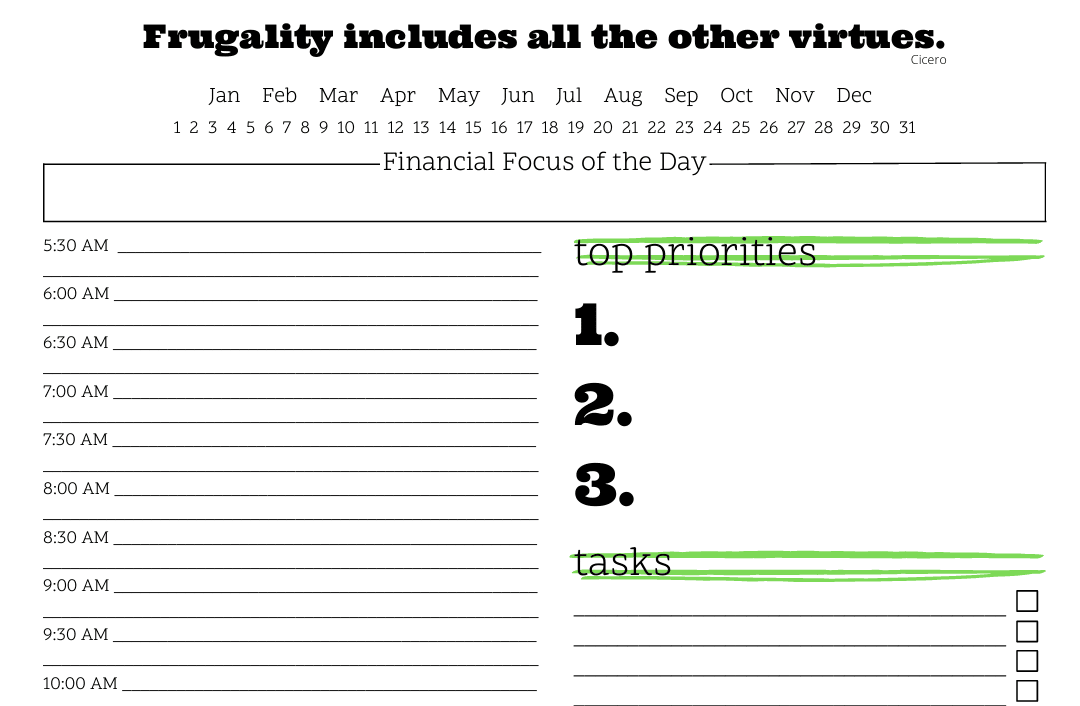
Subscribe to get a free daily budget planner printable to help get your money on track!
Make passive money the right way. No spam.
Editorial Disclaimer: The editorial content on this page is not provided by any of the companies mentioned. The opinions expressed here are the author's alone.
The content of this website is for informational purposes only and does not represent investment advice, or an offer or solicitation to buy or sell any security, investment, or product. Investors are encouraged to do their own due diligence, and, if necessary, consult professional advising before making any investment decisions. Investing involves a high degree of risk, and financial losses may occur including the potential loss of principal.
Source Citation References:
+ Inspo



